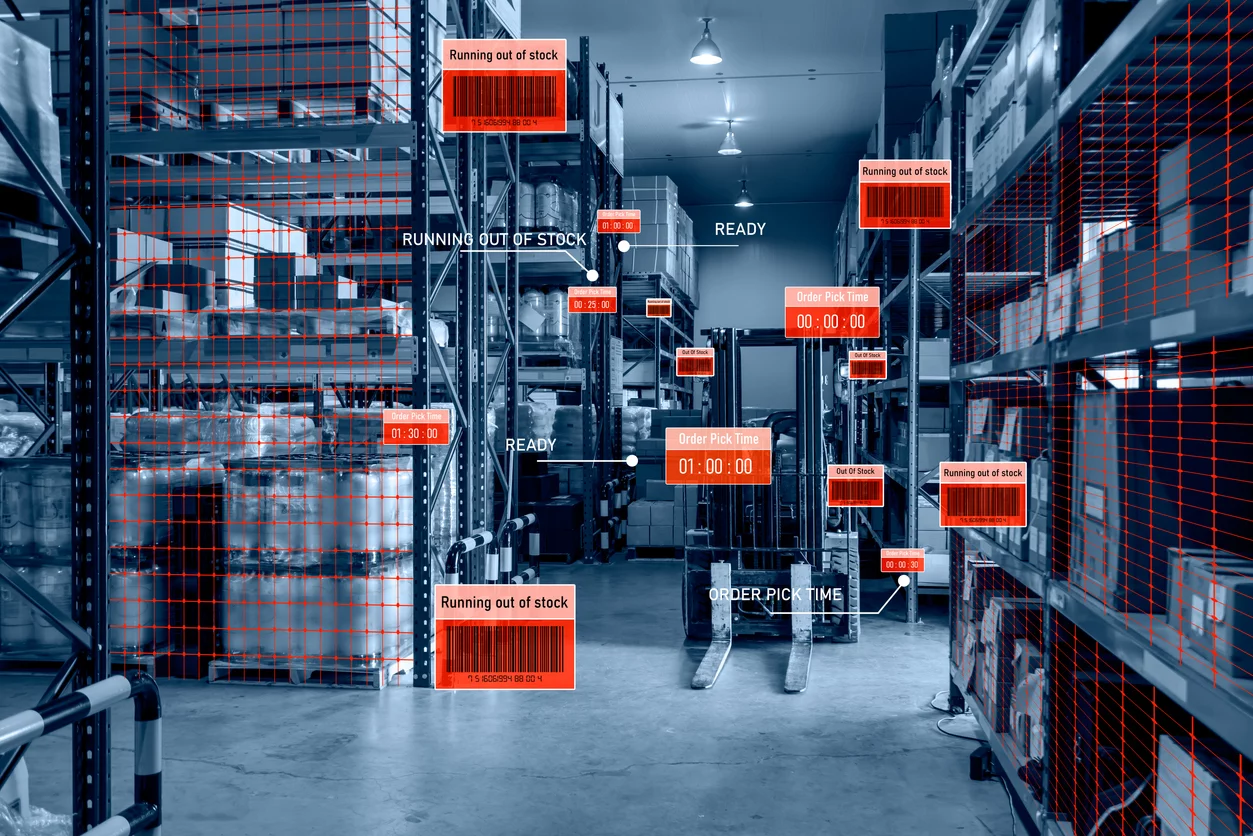Process and technological solutions related to the fourth industrial revolution (Industry 4.0) can enormously benefit manufacturing companies. In this context, we most often discuss the use of IoT devices, AI, or machine learning. Unfortunately, implementing these technologies is often challenging and involves high costs.
However, the company’s evolution towards Industry 4.0 doesn’t need to involve only projects that completely change the way companies operate but also smaller implementations that allow you to obtain benefits and optimize processes quickly.
A perfect example of this is our virtual warehouse and the related just-in-time production using 3D printing technology. In this article, we will tell you what these solutions are and how they help revolutionize modern enterprises.
What is a virtual warehouse?
A virtual warehouse is an IT system that allows you to manage company resources, plan inventories, and analyze needs—e.g., for machine parts, ready-made housings, or device components. As part of the Cubic Inch service, a virtual warehouse allows you to plan deliveries of 3D-printed parts for a specific day in the exact quantity the customer needs.
What are the benefits of the Cubic Inch virtual warehouse for companies?
Our service works according to the just-in-time manufacturing approach, which means that parts are delivered to the customer in exactly the quantity and time needed. This is to reduce any costs resulting from the need to store parts and the accompanying risks and costs, such as:
- warehouse space costs,
- damage or loss of stored parts,
- surplus parts,
- burden of investment costs,
- reducing the demand for specific parts.
A virtual warehouse allows you to completely eliminate these risks and minimize costs, and the process of adapting the company to this solution is quick and efficient. Due to these benefits, virtual warehouses and just-in-time production are increasingly becoming the first building blocks in companies’ evolution towards Industry 4.0.
Virtual warehouse in the context of the challenges of the modern market and Industry 4.0
Events in recent years, such as the pandemic or even the blockage of the Suez Canal, have clearly shown how unpredictable situations maintenance engineers and other specialists responsible for the supply of parts have to deal with. Therefore, an increasingly important goal is to secure the supply chain by using reliable (and fast) suppliers within the country.
Because the required raw materials and the 3D printing process itself are not dependent on global market conditions, this technology becomes the perfect answer to any surprising circumstances.
3D printing is an ideal technology from the point of view of the requirements of Industry 4.0
Virtual warehouses and just-in-time production achieve their true potential thanks to modern 3D printing technology. The process of creating parts is fast compared to, for example, injection or machining technology. The entire process—from scanning to printing—takes a few days.
In the case of injection technology, it would involve a long production time and a cost of the injection mold that could reach up to $100,000.
Additionally, at Cubic Inch we always maintain a buffer that allows us to fulfill emergency orders for customers, which we are able to deliver even in 48 hours.
Just-in-time production and virtual warehouse in practice – Colgate Palmolive Manufacturing
Our over 5-year cooperation with Colgate Palmolive Manufacturing is a perfect example of how these solutions support a modern manufacturing company.
Our client mainly required small format parts for production processes that had to be replaced regularly. They were struggling with long delivery times, a cumbersome ordering process, and, of course, high costs from previous suppliers.
We invited the client to the Cubic.Parts system, which currently catalogs over 20 of their parts. Using our virtual warehouse, the customer orders a selected number of parts for a specific date, which reduces the costs and risks associated with warehousing.
Additionally, we were able to offer a 20% to 60% lower price on each part. Moreover, 3D printing technology allows the company to constantly improve the ordered parts thanks to the freedom to change the designs before each order.
Can your company benefit from producing parts in 3D and using a virtual warehouse?
Our experience cooperating with large manufacturing and industrial companies shows that 3D printing can help reduce costs and streamline processes in almost every case.
The easiest way to check whether this potential also exists in your company is to determine the main challenges of ordering parts. In most cases, the main problems concern cost, delivery time, and limited possibilities of modifying the ordered parts. Typically, these problems are caused by the technology in which the parts are created or process issues on the part of the supplying company (often the machine manufacturer).
If your company struggles with similar problems, 3D printing can help you solve them.
Contact us, and we will help you efficiently implement 3D printing into your company.


